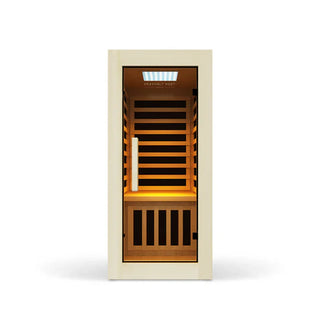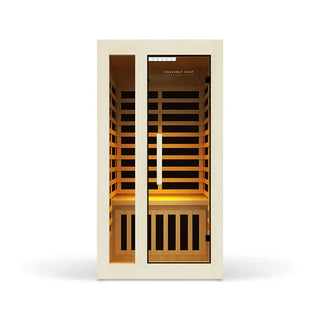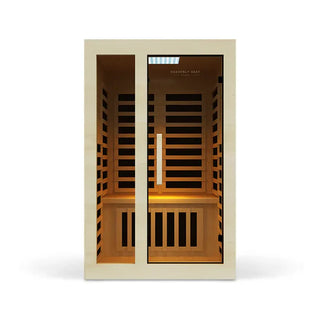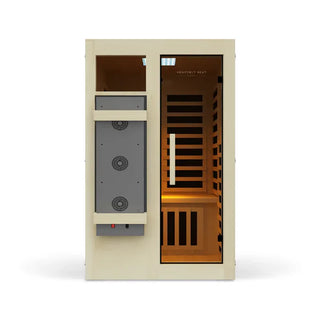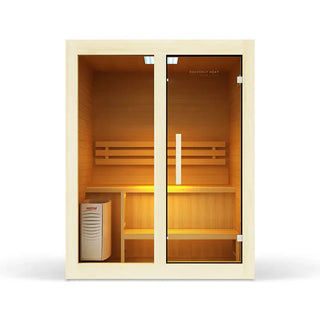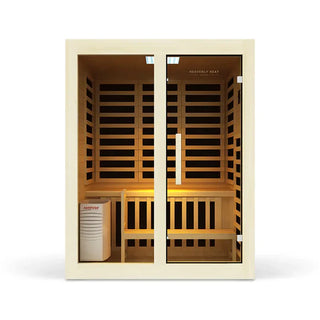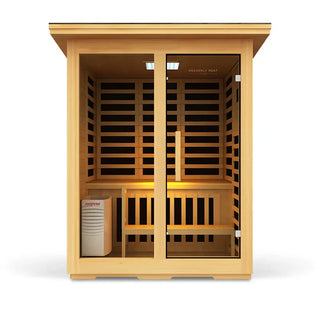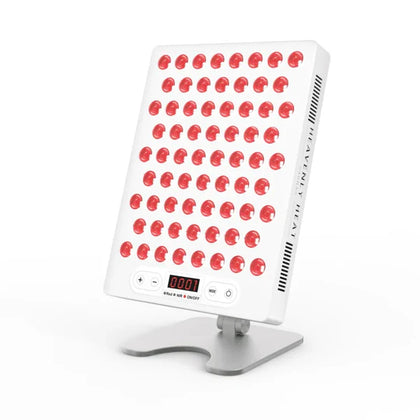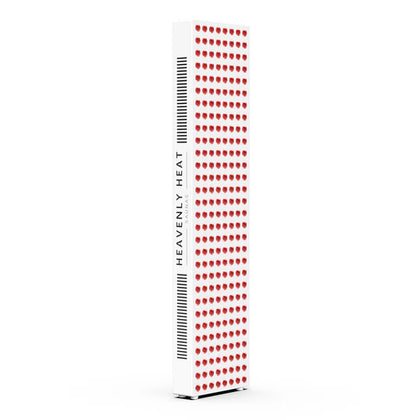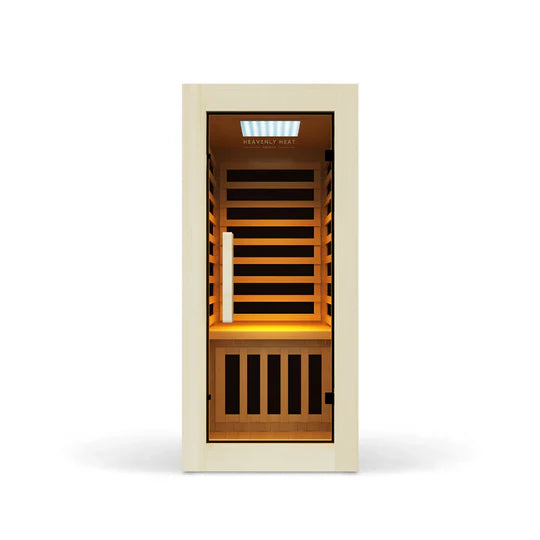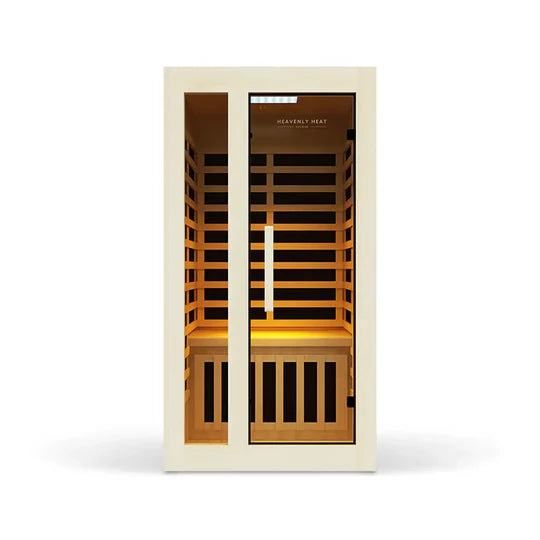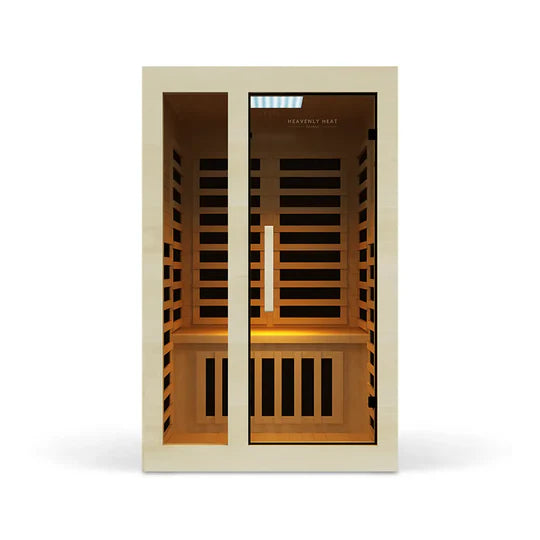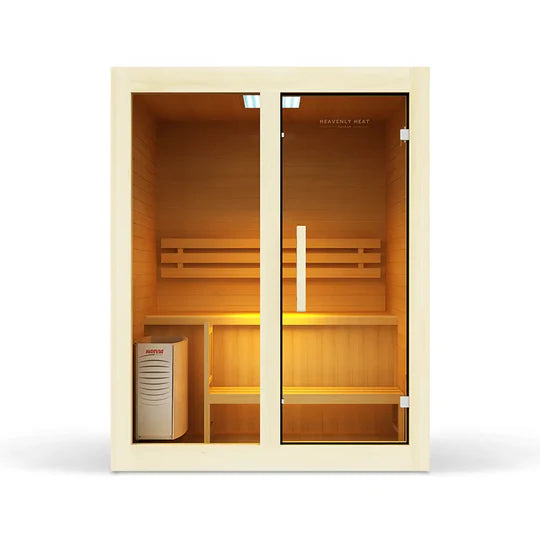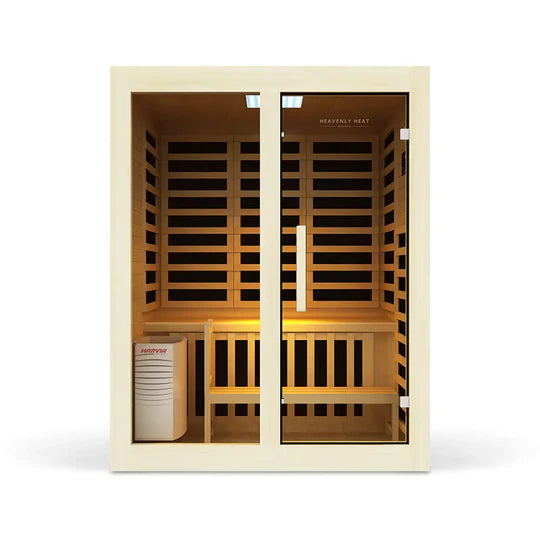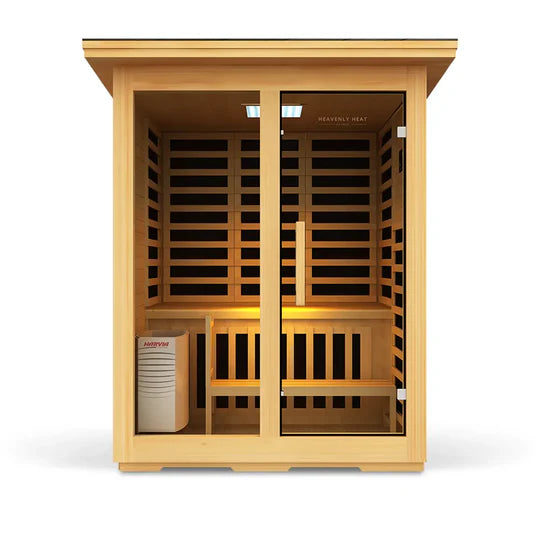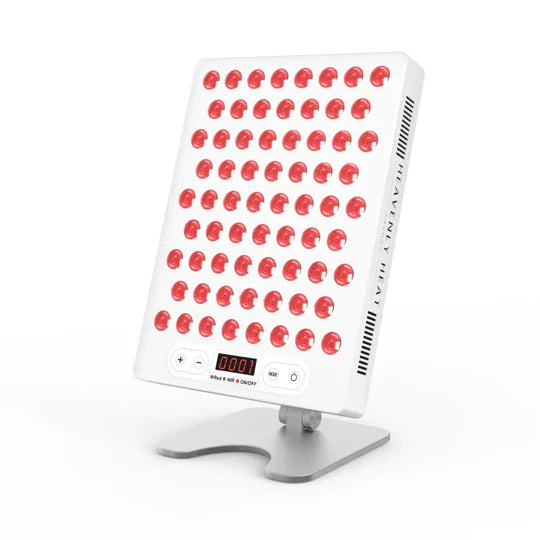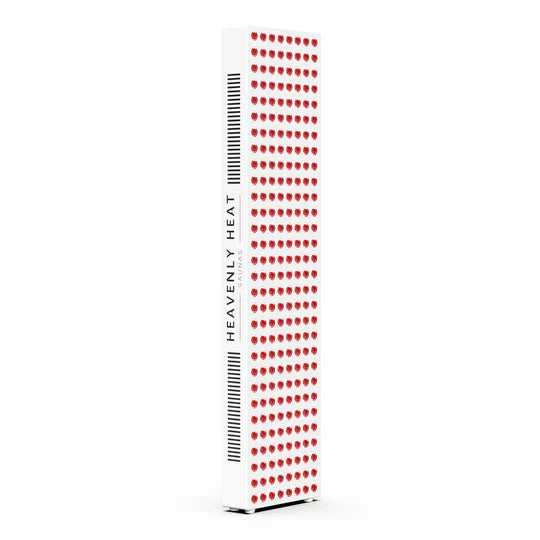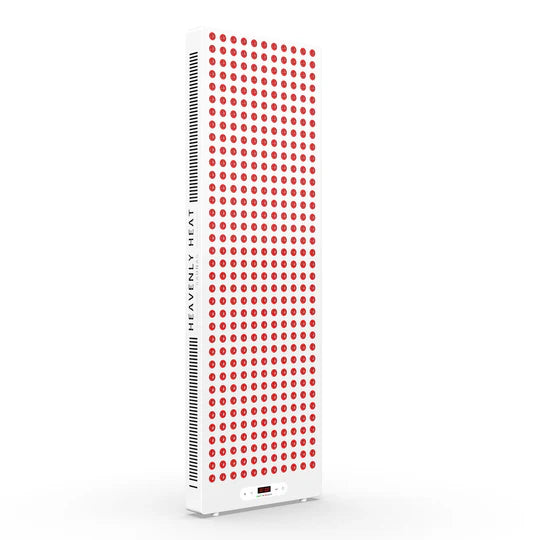Sauna for Apartments: The Best Saunas for Small Spaces and How to Install Them

Want a sauna but live in a small apartment? Finding space for relaxation can feel impossible.
Cramped rooms, limited ventilation, and tricky installations make it frustrating. But do not worry, there are compact and easy-to-install saunas designed for small spaces.
In this guide, we will help you choose the best sauna for your apartment and show you how to set it up hassle-free.
Key Takeaways
-
Installing a sauna in an apartment is possible, but you need to check building rules, electrical capacity, and ventilation.
-
Infrared, portable, and hybrid saunas are the best space-saving options for small apartments.
-
Proper ventilation is crucial to prevent moisture buildup and maintain air quality.
-
Most apartment saunas require at least 3x3 feet of space and a dedicated electrical outlet.
-
Costs range from $1,000 for portable models to $5,000+ for built-in units, with ongoing electricity costs varying by type.
Feasibility of Installing a Sauna in an Apartment
- Some Apartments Don’t Allow Saunas at All: Before thinking about installation, it’s important to know that many apartment buildings have rules that don’t allow saunas because of safety and ventilation issues.
- Landlord Permission Is a Must for Renters: If you’re renting, you can’t just install a sauna on your own. You need clear approval from your landlord to avoid problems later.
- Your Apartment’s Power May Not Handle a Sauna: Saunas use a lot of electricity, and some apartments aren’t built for that. You need to check if your unit’s wiring can safely support it.
- Without Good Ventilation, Moisture Can Cause Damage: Saunas create steam and heat, which can cause mold or damage if there isn’t proper airflow. That’s why ventilation is a big deal.
- Picking the Right Sauna Makes Everything Easier: If you choose a compact, apartment-friendly sauna and follow all building rules, you can enjoy the comfort of a personal wellness space without any trouble.
Best Types of Saunas for Apartments
Infrared Saunas – Energy-efficient and space-saving
- Infrared saunas don’t take up much space: If you live in an apartment, space is tight, and that’s where infrared saunas shine. A small 1–2 person model can fit right into a bathroom, closet, or corner without crowding your home.
- They use less energy because they heat your body directly: Infrared saunas heat your body instead of the air around you, which means they use far less electricity than traditional saunas, perfect for apartment dwellers keeping an eye on their utility bills.
- Lower heat makes them easier to use every day: Since they run at a lower temperature, infrared saunas are more comfortable and less intense, so you can use them regularly without feeling drained or overheated.
- Even short sessions can improve heart and blood flow: Just 15 minutes in an infrared sauna can help reduce blood pressure and boost circulation, making it a powerful tool for heart health without taking up your whole day.
- They can also help your body release harmful chemicals: Longer sauna sessions may help your body sweat out heavy metals and chemical toxins, but it’s best to do these under medical supervision to stay safe.
- A smart wellness choice for small homes: Whether you're using it for better circulation or detox support, an infrared sauna is a safe, smart, and space-saving way to support your health, right from your apartment.
Steam Saunas – Traditional heat with high humidity
- Steam creates a warm, humid space that helps you relax: Steam saunas work by heating water to produce moist air, giving a traditional, calming heat that feels soothing on the body.
- Breathing feels easier and skin looks healthier in steam: The humid air can clear your airways and keep your skin soft, making steam saunas great for both traditional and skincare benefits.
- Simple add-ons make steam saunas more enjoyable: Things like aroma diffusers or steam generators can improve the sauna experience and help you feel more relaxed.
- Without proper airflow, steam can build up too much: Because steam adds a lot of moisture to the air, good ventilation is important to avoid dampness or mold, especially in apartments.
- Regular steam use helps your skin stay strong and hydrated: Studies show that using steam saunas often improves your skin’s natural barrier, keeps it well-hydrated, and helps balance its pH.
- Steam heat helps blood move better and skin heal faster: The warmth boosts blood circulation and helps your skin recover more quickly, giving it a healthier look and feel.
- Steam gently removes oil and keeps your skin clean: People with oily skin may notice less surface oil after using a steam sauna, as the heat helps to cleanse pores naturally.
Portable Saunas – Compact and easy to store
Portable saunas are perfect for those who want a sauna without a permanent setup.
They are easy to set up, store, and move between rooms, making them ideal for small apartments.
Some models fit neatly into a closet, providing a flexible sauna experience without taking up valuable space.
Hybrid Saunas – Combination of infrared and steam
Hybrid saunas combine infrared and steam heating, allowing users to switch between dry and humid conditions based on personal preference.
These versatile saunas come in compact sizes suitable for apartments and provide a customizable wellness experience throughout the year.
Steam Showers – Shower and sauna in one
A steam shower combines a shower with a steam sauna, making it a space-saving solution for apartments.
These units fit into most bathrooms and provide a mini-sauna experience without requiring additional room.
While they don’t offer the full effect of a traditional sauna, they are a practical alternative for those looking to enjoy the benefits of steam.
Sauna Blankets – Heated wrap for relaxation
Sauna blankets offer a convenient alternative to traditional saunas. These heated wraps warm your body, providing relaxation and muscle relief without requiring dedicated space. They are easy to use and require only short sessions to experience benefits.
Sauna Tents – Foldable and budget-friendly
Sauna tents provide a cost-effective way to enjoy sauna therapy without permanent installation.
They are easy to set up and collapse when not in use, making them ideal for small apartments.
Their compact design ensures effective sauna sessions without occupying valuable living space.
Sauna Pods – Small, enclosed sauna spaces
Sauna pods are compact, enclosed units that offer a full sauna experience while taking up minimal space.
Some models are portable, while others can be installed in a designated spot within an apartment. Despite their small footprint, they deliver powerful heat for an effective sauna session.
Balcony Saunas – Perfect for outdoor apartment spaces
For those with a balcony, an outdoor sauna can be a luxurious addition. Balcony saunas are designed for weather resistance and help maximize indoor space.
Before installing, check your building’s regulations and ensure proper sealing against the elements.
Space Requirements for Apartment Saunas
Most small saunas require at least 3x3 feet, though 4x4 feet provides a more comfortable experience.
Many compact models fit into unused corners, closets, or bathrooms.
If space is extremely limited, foldable or infrared saunas offer great flexibility. Ensuring proper clearance around the unit enhances safety and ventilation.
Safety Considerations for Apartment Saunas
Fire safety is crucial when installing a sauna in an apartment. Choose a model with overheating pro tection and keep flammable objects away.
Electrical safety is also important, as most saunas require a dedicated 120V or 240V outlet.
Always confirm that your building allows saunas and that your electrical system can handle the load to prevent hazards.
Permissions and Regulations for Apartment Saunas
Before installing a sauna, check your building’s regulations. Many apartment buildings require permits, and landlords have the final say for renters.
Condo owners must follow association rules, which often include electrical and fire safety requirements. To avoid fines or forced removal, always seek approval before installation.
Ventilation Requirements for Apartment Saunas
Proper ventilation prevents heat buildup and moisture issues. An intake vent near the floor and an exhaust vent higher up keep fresh air circulating.
If external venting isn’t possible, a small fan or dehumidifier can help control moisture. Infrared saunas require less ventilation than steam saunas, but all models benefit from good airflow for comfort and safety.
Cost of Installing and Running an Apartment Sauna
Apartment sauna costs range from $1,000 for portable units to $5,000 or more for built-in models.
Infrared saunas are more affordable and energy-efficient, typically costing $10–$20 per month to run.
Traditional saunas can add $30–$50 to an electricity bill. Maintenance is generally low, with occasional cleaning and heater checks helping to keep costs manageable.
Electrical Requirements for Apartment Saunas
Most apartment saunas operate on either 120V or 220V. A 120V sauna plugs into a standard outlet, simplifying installation.
A 220V sauna heats faster and reaches higher temperatures but may require special wiring.
Before installation, check your electrical panel’s capacity to ensure it can handle the additional load. Consulting an electrician can help avoid costly upgrades or electrical hazards.


